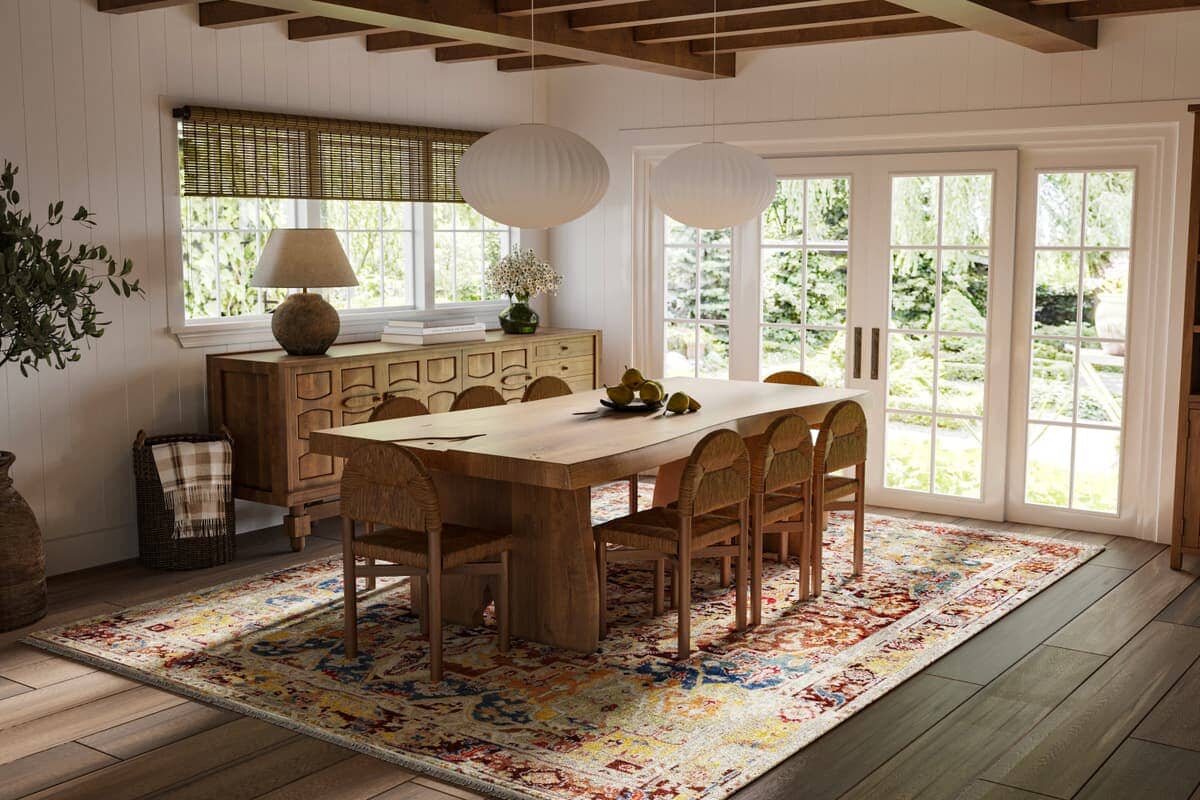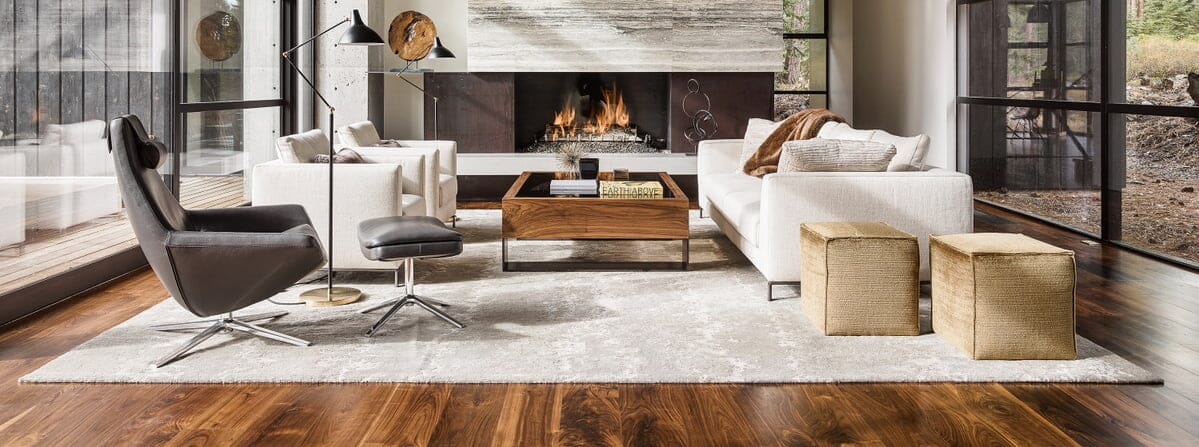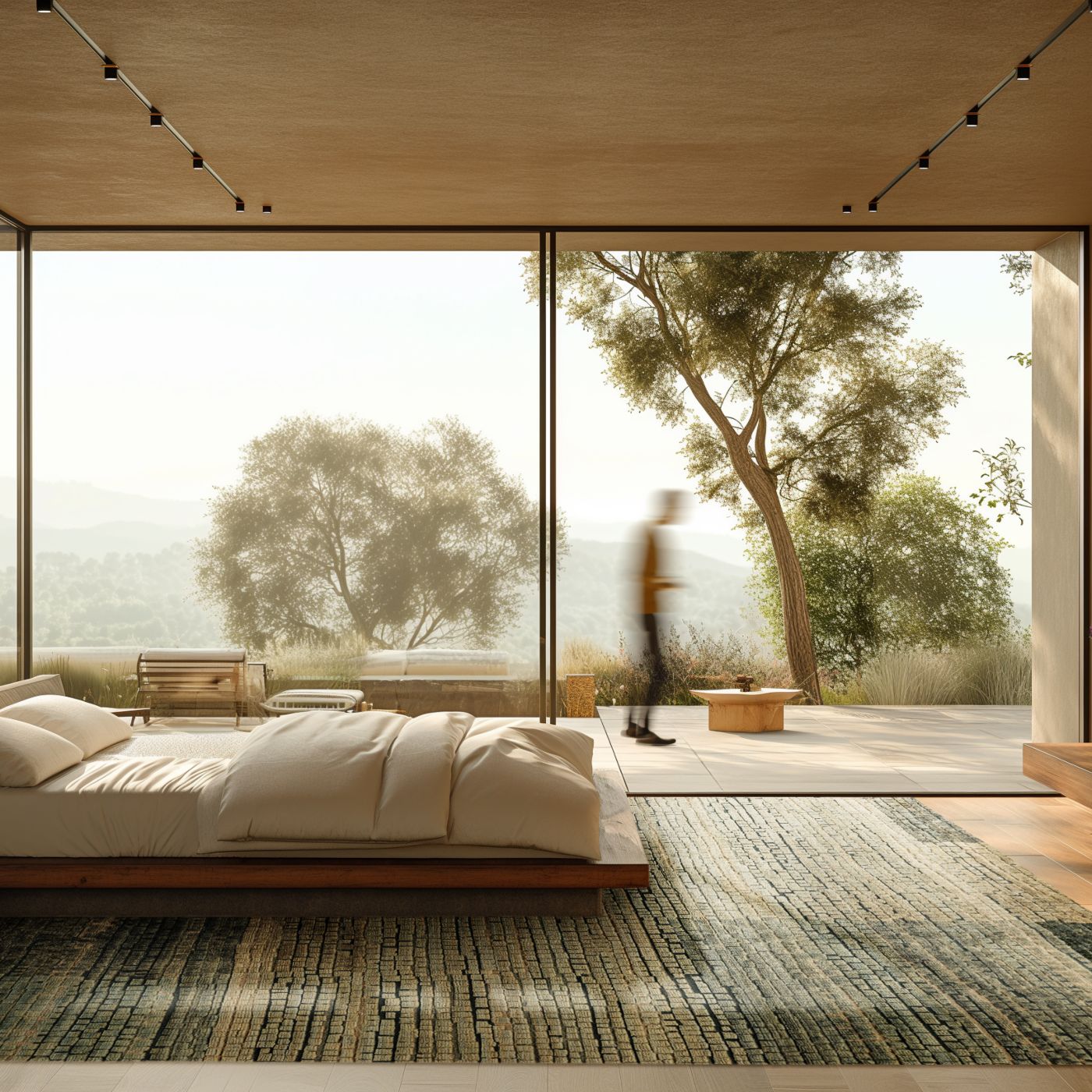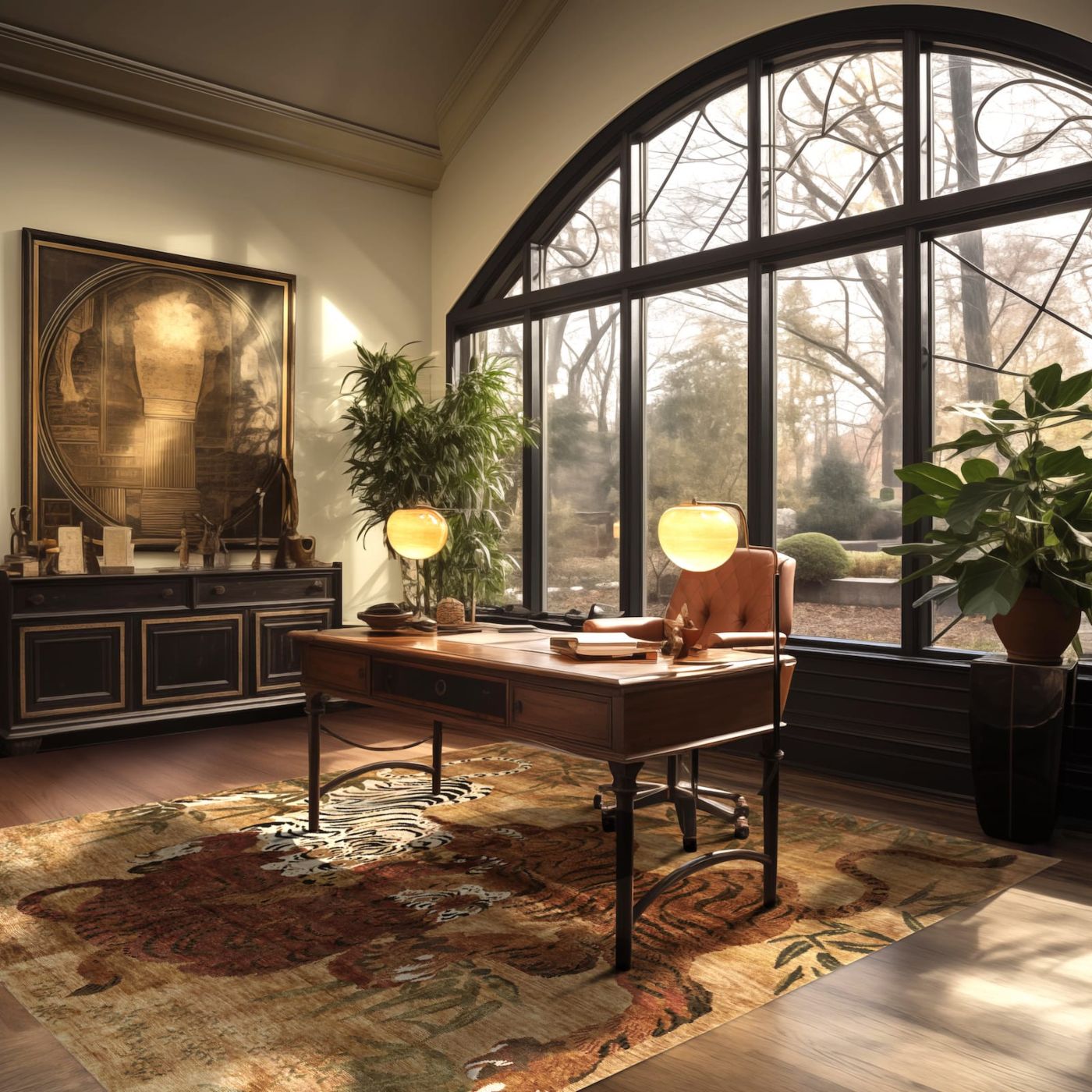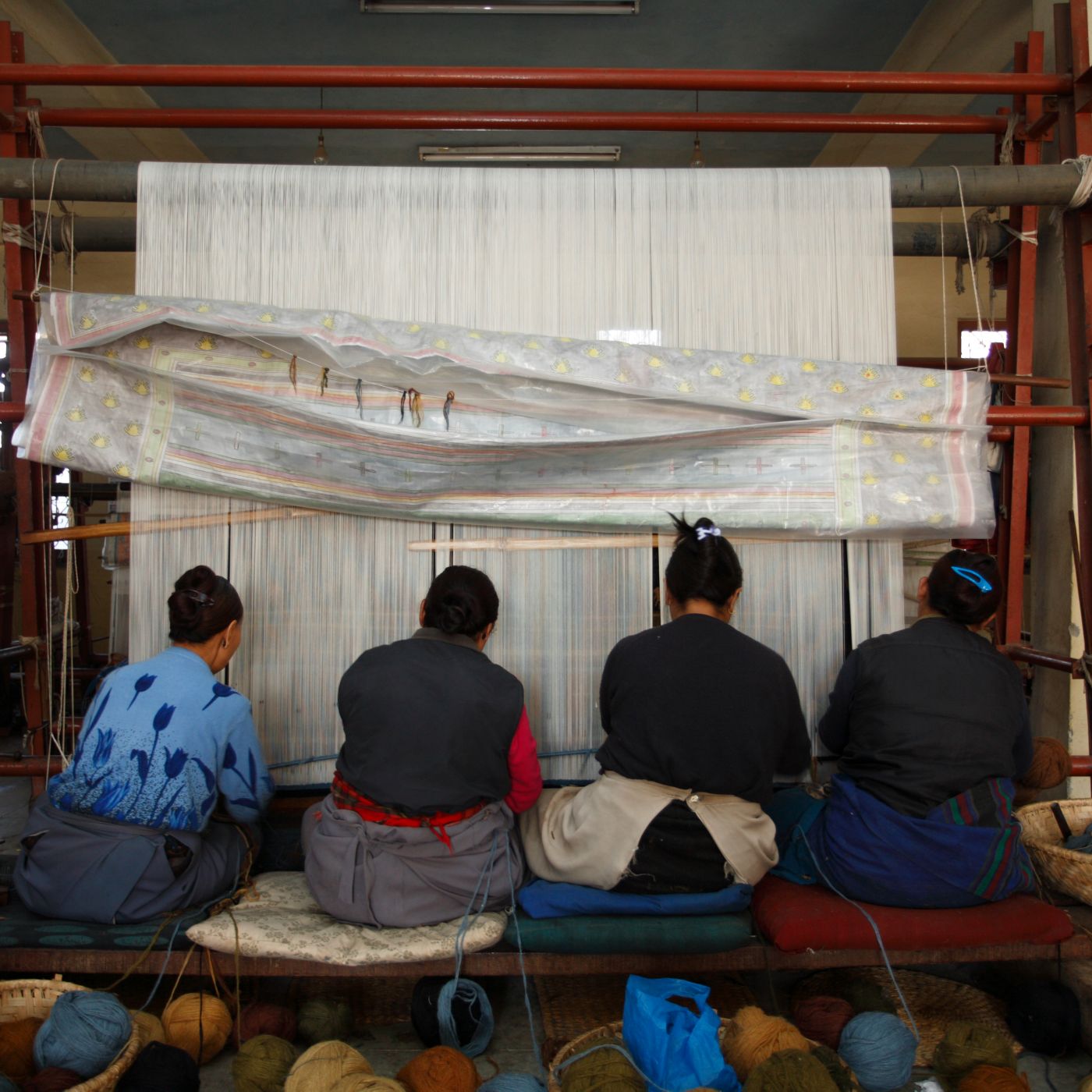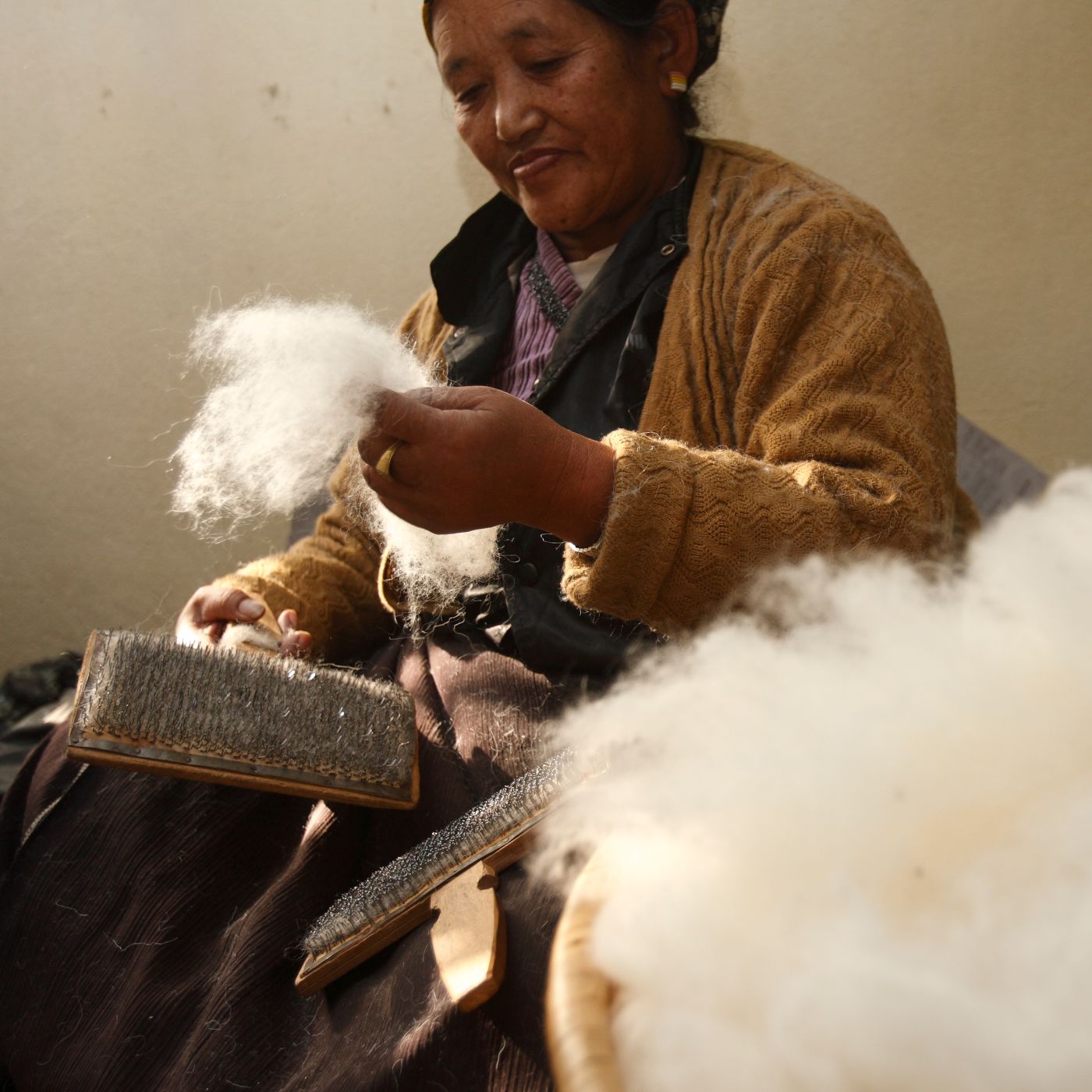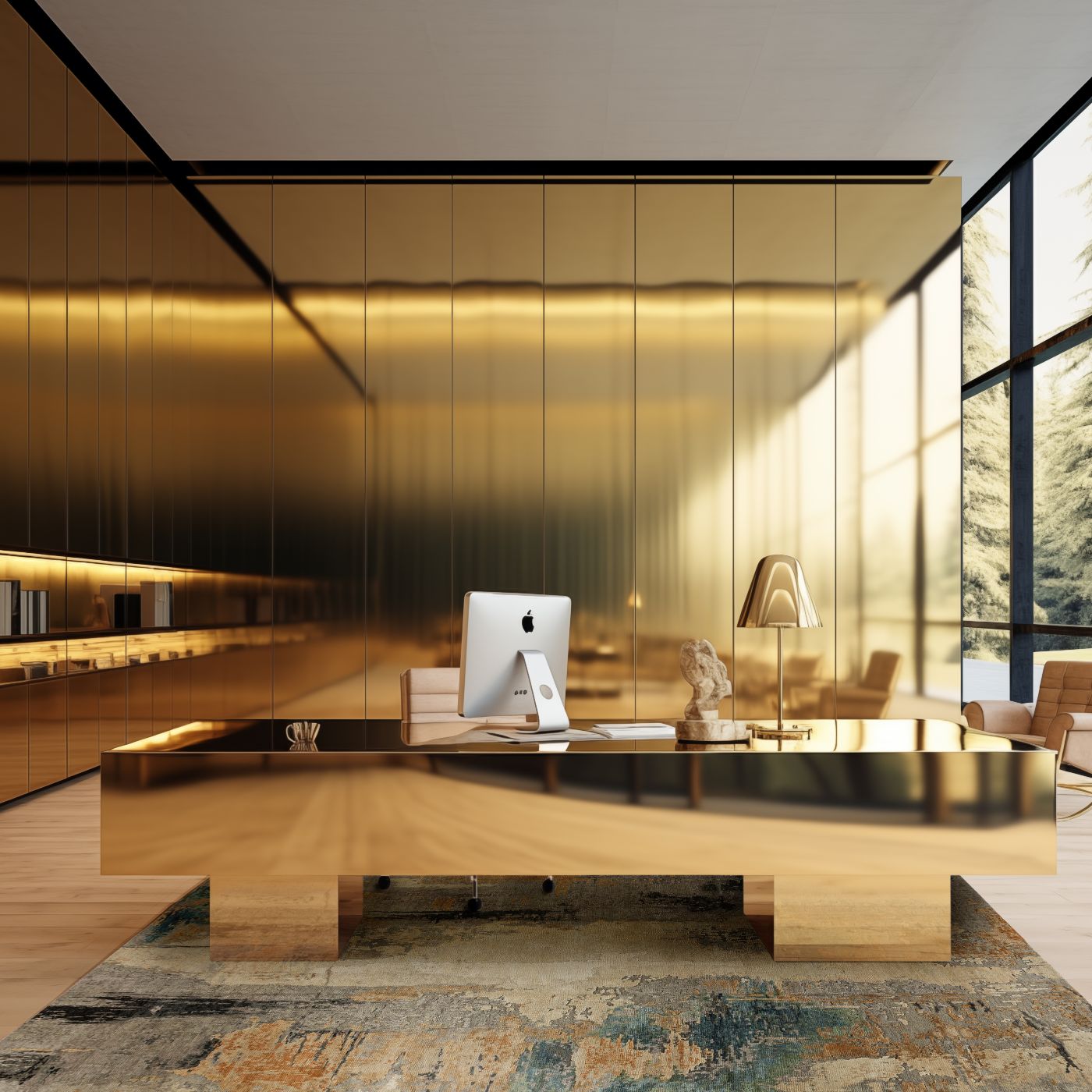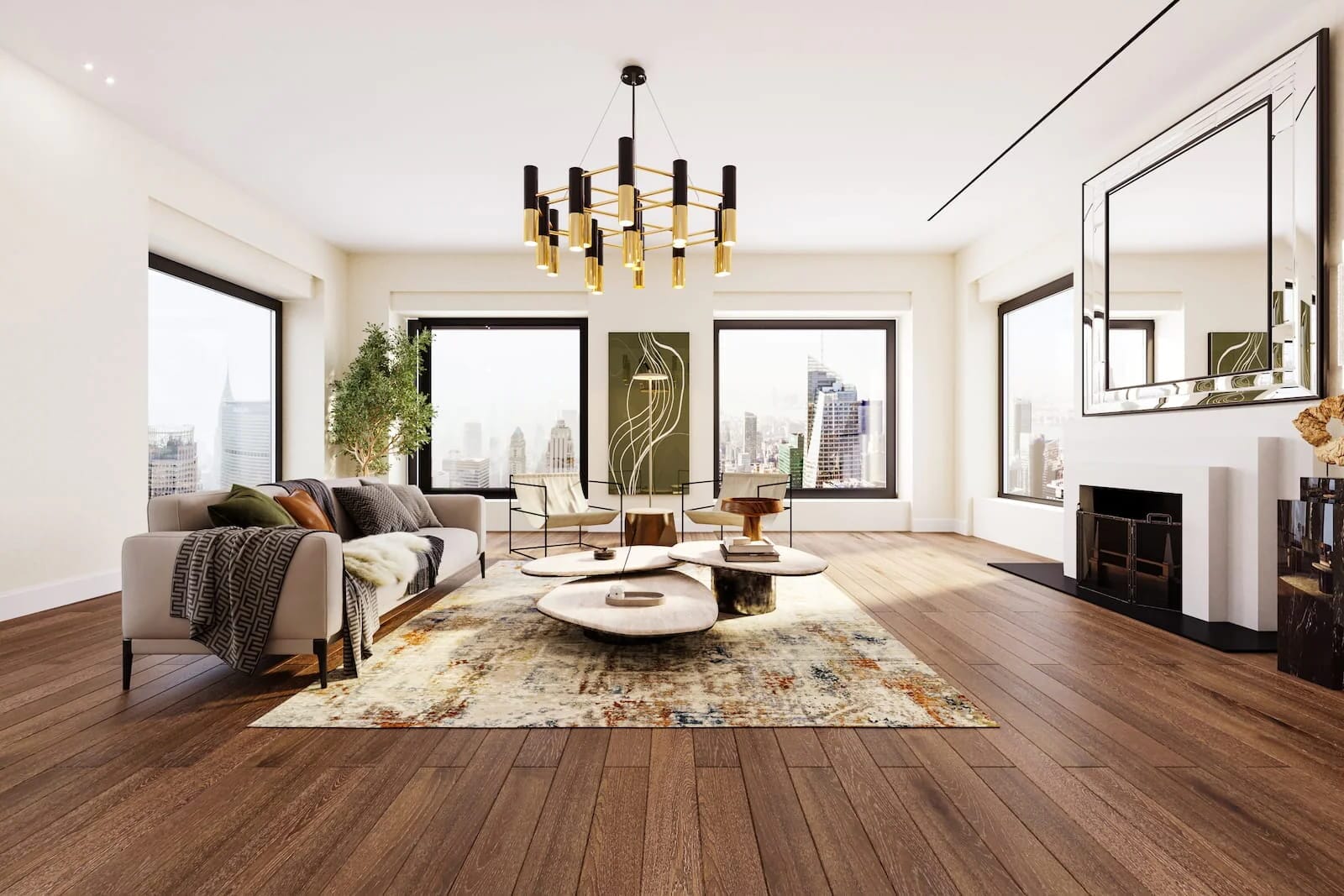
A Comprehensive Guide to Choosing the Perfect Rug for Your Living Room
A beautiful rug is integral to a thoughtfully designed living space. Living room rugs serve as practical floor coverings and powerful design elements that shape the character of the room. This comprehensive guide has all you need to find the right rug for your living room, including the perfect size, placement, and design to establish an authentic space that truly feels like home.
The key to a well-designed living room hinges on selecting the right rug size and placing it correctly within the space. These fundamental considerations can help you choose the appropriate dimensions and find the right layout to enhance the overall design of your living room.
What Size Rug Works for Your Living Room?
The most popular living room rug size is 8’x10’ (244x305 cm) for average-sized spaces, while 9’ x 12’ (274x366 cm), 10’ x 14’ (305x427 cm), and larger rugs work well in larger living spaces. Keep in mind that the right size rug for your living room ultimately depends on the dimensions of the room and the layout of your furniture.
Here’s how to determine what size and placement works best for your space.

Measure the Living Room Space
Find the room’s dimensions by measuring the length and width using a tape measure. Account for the arrangement of your furniture as well, including:
- The placement of seating areas
- Any design focal points
- The potential to create zones in open space rooms
- The distance between your furniture and the walls
Leave a clearance of no less than 18 inches (45 cm) between the edge of the rug and the wall.
Consider Different Arrangements
The placement of your rug should complement your furniture arrangement and create cohesion with the greater design of the space. The choice you make should align with your design goals, so it helps to take into consideration the myriad ways you can lay the rug in the room.
Front Legs On, Back Legs Off
When this works: This placement works well when your rug can comfortably accommodate the space, yet the dimensions don’t extend beyond the primary seating area. This creates a unified look that visually ties the room together.
How to: Position the rug so that it’s centered under the coffee table. The front legs of the sofa and chairs are on the rug while the back legs remain directly on the floor.
All Legs On
When this works: In smaller living rooms, this arrangement can define an entire seating area, which works for more intimate spaces, or with smaller rugs for a cozier layout. In larger spaces, this approach works when you have a large rug to anchor and emphasize the main seating area.
How to: Position the rug so that it extends under the furniture in the primary seating area with all furniture legs on the rug. Leave at least a few inches between the legs of your furniture and the edge of the rug.
Beneath the Coffee Table
When this works: For smaller rugs, this can highlight the coffee table as the focal point, creating visual interest in a more humble space. This also works to foster a smaller, more intimate seating area within a living room, either as part of or separate from the primary seating arrangement.
How to: Center the coffee table on the rug. Typically, all other furniture legs are off the rug in this arrangement, but if it works proportionally and doesn’t crowd the space, you can place the front legs of some pieces on the rug.
At Least 18 Inches from the Wall
When this works: This arrangement works best with extra-large rugs for a living room and for spaces that can accommodate a more average-sized rug with all pieces of furniture.
How to: Place the rug centered in the room according to the dimensions of the space, maintaining a minimum 18-inch border around it. Balance the placement of furniture as needed, stepping back to see how the rug interacts with other elements. Make any necessary adjustments to achieve balance.
Rug Material and Quality
Rugs bring a strong design presence, but they’re also functional elements of your living room. The fibers, materials, and artisanship are all crucial components that define the quality and durability of your rug.
High-quality handmade rugs are valuable investments that can last for generations with proper care.
Material Choice
Considering the high level of foot traffic in the living room, it’s wise to prioritize materials known for durability, such as:
- Wool: The texture of 100% wool distinguishes it as an exceptional fiber for living room rugs. Its versatility and durability make it an excellent choice for high-traffic areas, and its ability to absorb vibrant dyes and retain a beautiful luster renders it truly superior to synthetic fibers.
- Bamboo Silk: Made from a high-end type of viscose, bamboo silk fibers are notably resilient, making them a viable choice for high-traffic zones. The fibers possess many of the same visual and tactile qualities as conventional silk, at a more economical price point.
- Hemp: Low-maintenance and eco-friendly, hemp fibers are naturally sturdy and resistant to wear. Their unique texture and earthy appearance can complement different interior styles, including bohemian, rustic, and coastal themes.
As a rule, natural fibers outperform synthetic fibers in both strength and appearance. High-quality natural fibers can offer a natural resistance to soiling and stains and, with proper maintenance, retain a warm, inviting feel underfoot for decades.
Quality and Durability
The construction methods and craftsmanship of a rug largely determine its durability and value. Consider how it’s made to assess its quality and expected lifespan:
- Handmade vs Machine-Made: Handmade rugs are crafted with meticulous care and attention to detail, making each piece beautifully impossible to reproduce. Machine-made rugs, on the other hand, are mass-produced, with shorter lifespans than handmade rugs.
- Tufted: Known for their plushness, tufted rugs have loops of yarn pulled through a durable backing material. The texture can contribute to a cozy and inviting atmosphere. Hand tufted rugs are more desirable than machine tufted rugs, as they introduce the touch of the artist’s hand.
- Hand Knotted: Hand knotted rugs are made by tying individual knots onto warp threads. These rugs are renowned for their intricate designs and incredible longevity. Persian rugs are classic examples.
Ultimately, handmade rugs, especially hand knotted rugs for the living room, are of much higher quality and durability compared to machine-made counterparts.
Color and Style Considerations
The right living room rug is the perfect convergence of color and pattern to complement the other elements in the room. Pay close attention to the palette and style to achieve a cohesive, visually appealing space. Heed these tips to find design harmony between your decor and a luxury rug for your living room.
1. Coordinate Colors
The rug’s color palette should harmonize with the existing hues in your living room. Consider the dominant colors in your furnishings, walls, and decor. Then, find a rug that either complements these colors or introduces an accent color for visual interest.
2. Create Harmony with Patterns
Consider the style and pattern of the rug carefully. Different styles, including Heriz, Gabbeh, and Kilim, convey distinct visual narratives, ranging from bold, geometric designs to monochromatic floral motifs. If your living room has bold patterns in the furniture, a more subtle rug design can balance the space. Conversely, a rug with a striking pattern can become a focal point in a space with more understated aesthetics.
3. Mix and Match Styles with Existing Decor
The existing style of your living room should dictate the rug you choose, but keep in mind that you can play with design momentum in myriad ways. For traditional or classic interiors, modern living room rugs can offer a fresh contrast. In contemporary spaces, antique or transitional rugs create an eclectic look.
4. Incorporate Contrast
When thoughtfully done, contrast is dynamic and visually stimulating. If your decor is predominantly neutral, you might consider a rug with a bold, contrasting color. You can also incorporate contrast in pattern and texture, but keep in mind this is best done with styles that share a common color palette.
Custom Rugs for Your Living Room
Through design personalization, your living room reflects your individuality. Rug customization allows you to further infuse personal touches and unique elements into a living room rug. Custom rugs give you the flexibility to match your unique vision and design requirements, such as:
- Color
- Size and shape
- Pattern and design
- Material
- Texture and pile height
- Edge and binding options
- Cultural symbolism
Custom rugs not only reflect your personal style, but they can be made to your living room’s precise dimensions and material preferences. This ensures that your living room rug becomes an integral part of your living space, uniquely tailored to your tastes and needs.
Discover Luxury Rugs for Your Living Room
Finding the perfect rug for your living room is an opportunity to create a space where you can truly feel at home. The size, design, and placement of your living room rug can validate your distinct individuality and transform a common space into a place of beauty.
Explore Tufenkian’s collection of extremely handmade rugs and find an extraordinary rug for your living room, including modern, traditional, abstract, and vintage rugs. Test Drive a rug in your home today.













